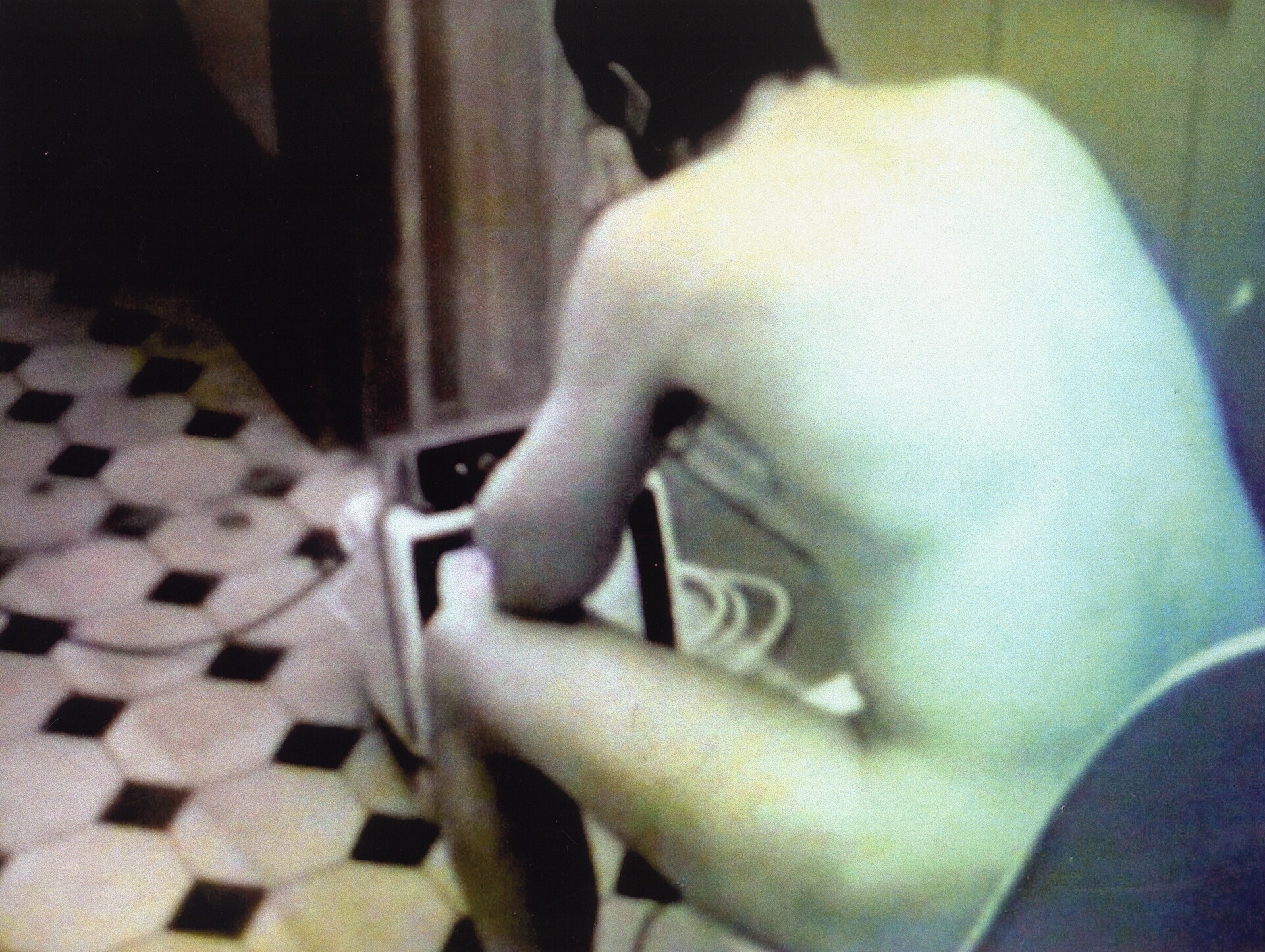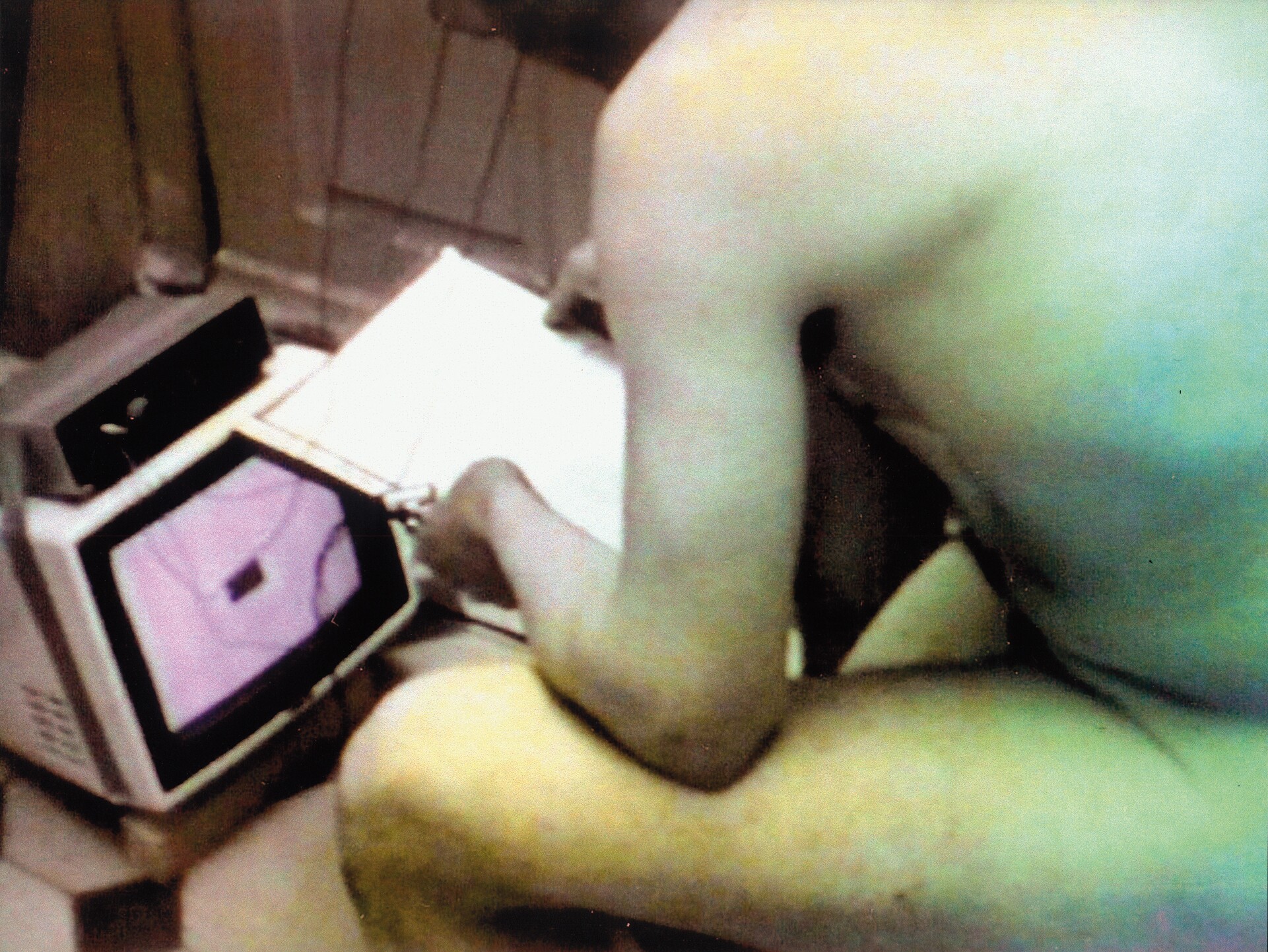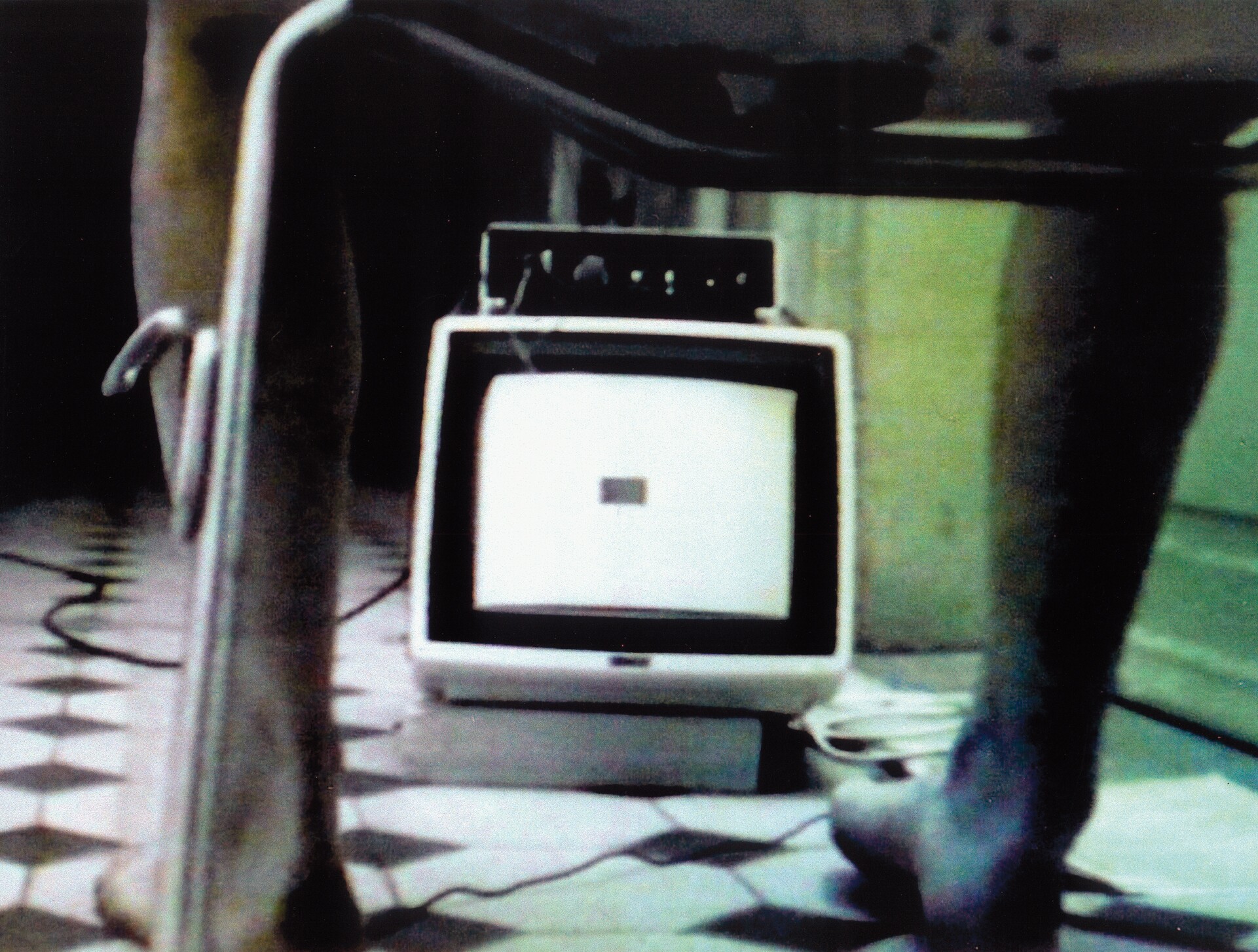MEDIENBLOCK_RICHARD_KRIESCHE
PROJEKT38
BRAIN-TV
projekt38
brain-tv, 1981
basel
eine brain-performance des künstlers zu brainwork.
der nackte künstler liest einen text vor einem monitor, wobei seine hirnströme den monitor steuern. ein weißes bild, in dessen zentrum ein schwarzes rechteck pulsiert: „in einem sind sich die manager der elektronischen bildverwertung einig, dass alle bildmaschinen und bildprozessoren, die heute für die nächsten 15 jahre für den markt erdacht werden, mit ende dieses jahrhunderts restlos veraltet sein werden.“ (screendigest september 1981.)
project38
brain-tv, 1981
basel
a brain-performance by the artist on brainwork.
the naked artist reads a text in front of a monitor, while his brain waves control the monitor. a white picture in whose centre a black rectangle pulsates: “on one thing the managers of electronic image utilisation agree, which is that all of the image machines and processors planned today for the market for the next 15 years will be totally outdated by the end of this century”. (screendigest september 1981.)
kriesche: „bilder in den kopf hinein zu bringen, damit werden sich die bildprozessoren nicht mehr befassen. sie werden sich stattdessen der bilder bemächtigen, die unsere köpfe verlassen, diese bilder sind erstmals keine abbildungen mittels eines optoelektronischen systems oder gar der hand, es sind dies kameralose, elektronische bilder, sie sind, da kameralos, ausbildungen unseres eigenen körpers. der zugriff zum bild ist erstmals verknüpft mit dem zugriff zu uns selbst. dieses bild im kontext des tv-schirmes ist das kameralose selbstportrait, wobei das selbst sich selbst unentwegt bildet. indem aber das selbst sein selbst erstmals aufzeichnen sieht, verändert das sehen das bild, indemdas selbst also das eigene bild sieht, verändert das selbst sein bild. das ist das radikale format der neuen kunst.“
kriesche: “introducing images into one’s head, image processors will no longer deal with that. instead they will take possession of the images leaving our head, these images are for the first time not pictures using an optoelectronic system or even the hand, they are cameraless electronic images, and since they are cameraless they are formations of our own body. access to the image is for the first time linked to access to ourselves. in the context of the tv screen this image is the cameraless self-portrait, with the self constantly forming itself. and yet since the self sees itself recorded for the first time, the act of seeing changes the image, in that the self sees its own image, and so the self changes its image. this is the radical format of the new art.”



